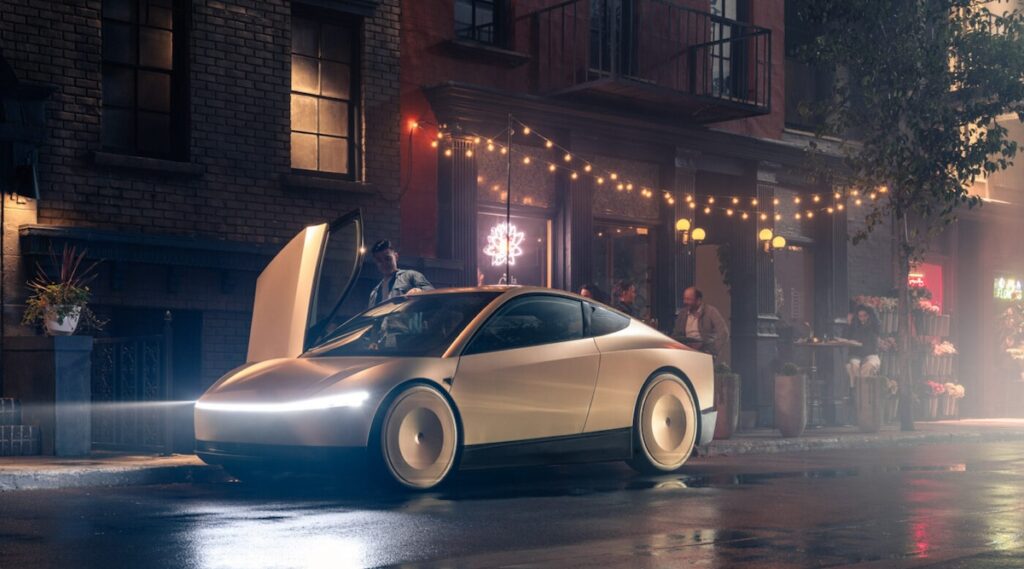Sign up for CleanTechnica’s Weekly Substack for Zach and Scott’s in-depth analyses and high level summaries, sign up for our daily newsletter, and/or follow us on Google News!

Last Updated on: 25th April 2025, 03:12 am
This isn’t the first time it’s been said, and it won’t be the last, because the idea of a dramatic robotaxi revolution carries on. And, yes, I’ll admit that I was a heavy proponent of that for a long time. However, the point we’re making in this piece is that there are some serious flaws in the idea that many people will switch from car ownership to using robotaxis.
This article was triggered by a reader comment, so let’s just get to that comment and give credit where credit’s due.
Under my article discussing whether Tesla robotaxis would be profit or loss centers, “eveee” provided the following comment:
Are you taking a taxi to work every day and back? Nope.
What exactly are robotaxis going to replace? Not buses. Not trains. Rental cars?
You know why it’s really not serious? Because it does not ask what taxis are used for today.
Why don’t taxis already replace all other forms of transportation now?
Why would making taxis cheaper replace all other forms of transportation?
Simply put, taxis cannot replace all other forms of transport. In fact, taxis cannot even replace cars for all uses. It is simply not possible.
Why? There are so many reasons. Let’s start with a simple one.
Traffic Congestion. In every city where rideshare has been introduced and taxi use increased, traffic congestion increased. Why is that? Is it just a coincidence? Nope.
Vehicle Miles Traveled. VMT. Any serious discussion of transportation includes it. Not a word of it here. Shows amateurism. Every well educated transportation professional knows this. Just why is that important? For one, taxis drive to pick up passengers. They don’t start out parked in your driveway before you go to work, and they don’t park at work when you go home. They always use extra miles to pick up passengers. VMT increases. That means more congestion because vehicles are on the road more often.
Here’s another one, but its related. Space. Not outer space. Traffic space. The amount of space per passenger is highest in a single occupant car. Buses, trains, shuttles, walk, bike, all occupy less space. There is only so much room on the road. More cars, more traffic, more congestion.
Not just in cities, but on any road space. Especially any heavily travelled road, and especially at intersections. You can hit a traffic jam far from the city on heavily trafficked roads on holiday weekends. Everyone knows that or should realize it.
So far, between VMT and space, its impossible to replace all transport or even just regular cars with taxis, because it simply does not work. Its a dumb idea, poorly thought out.
It misses the concept that transportation is not just about objects like cars or other vehicles. Its about the transportation system, roads and all, and how it works.
But unfortunately, once poor thinking gets going, it rarely stops. There is more. Much.. more.
Just exactly how do taxis replace all cars with less taxis? There are reasons why that can never happen. How do you transport the same number of people the same number of miles with the same kind of vehicle in the same amount of time and with less vehicles? You cannot. Its impossible. Mathematically and physically.
The whole argument is bunk. Time is limited. You do not have 24 hours to get to work. It has to be done in two short rush hour periods of time.
This is the Seba effect. Seba talks. Thinking stops.
Great points. However, I’ve got a few variations on the key arguments here and where robotaxis have serious drawbacks when it comes to both attracting passengers and making a profit doing so.
- As the reader points out, robotaxis actually add to driving, as they have to drive much more to get you from point A to point B and then back to point A later in the day. They have to drive from wherever they are (“point Z”) and get you, then take you where you want to go, and then drive somewhere else. That extra driving comes at a cost. So, any cost advantage from a robotaxi vehicle being shared can actually quickly get wiped out by miles driven going up a lot. (Note: eveee focuses on extra traffic congestion when discussing this, but I think the key is really that the extra VMT adds wear & tear and fuel use, or cost, to the robotaxi compared to a privately owned car.)
- Along a similar line, the number of vehicles needed probably wouldn’t go down as much as it’s often hyped. We are all familiar with rush hour, when the largest portion of people are driving to or from work and school. All of those people still need a car at the same time. So, you can’t say Robotaxi #1 is going to drive both me and my neighbor where we need to go, cutting down on the number of vehicles on the road, and vehicle ownership costs. Robotaxi #1 will drive me and Robotaxi #2 will drive my neighbor. Services like Uber and Lyft deal with this issue via surge pricing, or whatever it’s called these days. It costs much more to get a ride during high-volume periods. That’s going to remain a core issue, and no robodriver is going to eliminate the problem.
- A third point not addressed above is that most of us use our cars to store stuff we’ll need at different times of the day, or from time to time. If we’re going to play tennis after work, we have our tennis bags in the car. Now we’re going to take those in and out of work, our kids’ school, the grocery store, etc.? What about shopping, by the way? We often go shopping — for food or goods — and the leave those purchases in the car when going elsewhere. Just for my little family of four, I often pack the car with groceries and household supplies in between school runs; doctor, orthodontist, and dentist visits; or other errands. Ditching the car for robotaxis, I’m now going to bring those bags and bags around with me from place to place? Or would I have a robotaxi somehow just wait for me at each place? (Very unrealistic.) Then there are umbrellas for rainy days, certain documents, computer bags, hand sanitizer, snacks, various drinks, phone chargers….
In short, it just seems unrealistic that robotaxis are going to take over the world. Yes, they may well replace human-driven taxis. That seems like a given. However, the idea that they will make a huge portion of car owners ditch their car seems unlikely to ever become reality.
Whether you have solar power or not, please complete our latest solar power survey.
Have a tip for CleanTechnica? Want to advertise? Want to suggest a guest for our CleanTech Talk podcast? Contact us here.
Sign up for our daily newsletter for 15 new cleantech stories a day. Or sign up for our weekly one if daily is too frequent.
CleanTechnica uses affiliate links. See our policy here.
CleanTechnica’s Comment Policy



